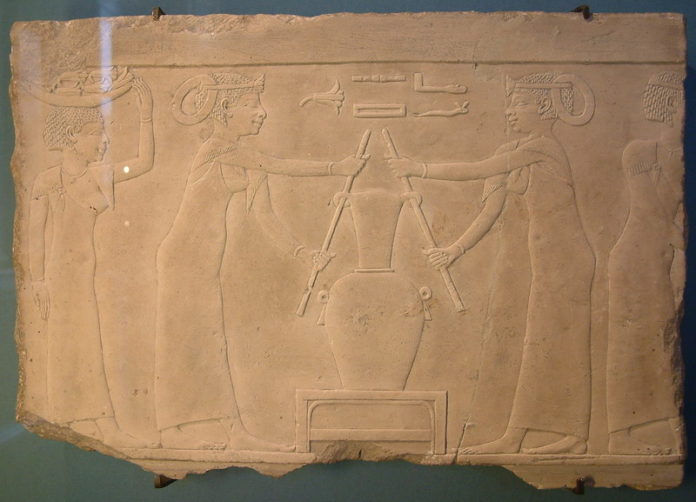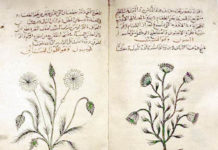Plants were treasures of the ancient world. Their uses were wide and varied from culinary herbs, perfumes and cosmetics to medicines and incense for sacred ceremonies.
The Great Herbal of Chinese medicine dates back to around 2000 BC and lists 365 medicinal plants. The Chinese were imaginative in their employment of aromatics and often had many uses for just one herb. For example, jasmine flowers were used to fragrance hair, to wear as garlands around the neck, to hang in the house as air fresheners and to flavour teas.
The Vedic literature of India, also dating back to 2000 BC, lists more than 700 aromatic plants for religious and medicinal use. The Rig Veda expounds the sacred duty appointed to humans in handling these precious gifts of creation. Ayurveda, the world’s most ancient and complete system of holistic medicine originated in India, and included the use of essential oils such as basil, coriander, ginger and sandalwood for thousands of years.
From Sumer and Assyria to Egypt and Greece
The ancient Sumerians and Assyrians enjoyed bathing in fragrant flower waters and made their skins silky soft with exotic oil blends. However, it was the Ancient Egyptians that truly nurtured the practice of aromatherapy.
Aromatic plants were regarded as sacred treasures in Egypt. One creation myth told of how the phoenix brought frankincense to the Egyptians in its claws. Cedarwood, cinnamon, frankincense and myrrh were transported to the Nile Valley to grow. As trade and commerce increased the Egyptians were instrumental in introducing aromatherapy to the rest of the ancient world.
When Jewish tribes left Egypt for Israel (around 1240 BC) they took with them a vast knowledge of herbals. Much of Greek medicine was also founded on Egyptian healing, though the Greeks can take credit for greatly developing these systems.
The Physicians of Greece
Aromatherapy played a key role in the medical practices of Ancient Greece. The Father of Medicine’, Hippocrates, prescribed aromatic baths on a daily basis in his Aphorisms. Another famous Greek physician, Asclepiades recommended bathing and massage as gentle therapies to treat the body and mind. The renowned botanist Theophrastus even observed and recorded the effect of external poultices on internal organs.
Both the Ancient Greeks and Romans were extravagant in their practice of aromatherapy. Essential oils became the domain of physicians, who used them to treat athletes, soldiers. So respected was the art of using perfumes that perfumers were considered as ‘doctor and apothecaries’. Incense was burned as much in private households as it was in temples. Towards the end of the Roman Empire, the local populace were ordered to burn incense daily in honour of their emperors.
The Fall Of Rome
The over-extravagance of Rome’s use of aromatics led to the fall of aromatherapy. In the early Christian era it was condemned by the Church and when the Empire collapsed so did the private use of fragrant herbs and oils. Across Europe a dark veil had fallen and aromatherapy retreated back to the religious orders to be used solely in liturgy. It would not resurface again until a great plague began to sweep through Europe.
References:
- Maxwell-Hudson. Aromatherapy Massage. Dorling Kindersley, 1999, London.
- David Schiller & Carol Schiller. Aromatherapy Basics. Sterling Publishing,1998, New York.
- Julia Lawless. The Encyclopedia of Essential Oils Thorsons, 2002, London.
- Denise Whichello Brown. Aromatherapy. Hodder Headline, 1996, London.








